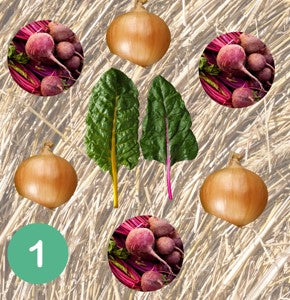Garden Design: Staple Crops, Nutrient-Dense Crops & Fun Crops

Working in agriculture presents many challenges and many rewards. There is always a balance to be working towards and a need for flexibility, adaptability, ingenuity, and the ability to find solutions when issues arise. As climate uncertainty becomes ever more present- balancing perennial and annual systems of food, fuel, and fiber production, land regeneration and biodiversity enhancement are becoming more critical. As we face droughts, floods, storms, fires, disruptions in pollinator populations, etc, optimizing diversity in our gardens and land-management systems will mean we have many eggs in many baskets, which will lead to greater resiliency.
Design tools in the areas of permaculture and agroforestry are very useful and fascinating to explore, as they present opportunities for the complexity of the human mind to meld into the complexity of naturally occurring ecosystems. These are not new systems, as Indigenous land stewards the world over have been creating, enhancing, and utilizing these methods of food, fuel, and fibre production for thousands of years, while maintaining the biodiversity of their respective deep ecologies of place.
For many of us however, especially those of us living in urban centres, we only have so much space to work with, and often rely on plots at community gardens or a small square footage of balcony greenspace. When we are limited in our space- we can be thoughtful and functional in our thinking re: what to plant. Yes, we could use up our space to grow 10 varieties of funky tomatoes, or six types of heirloom lettuce- or we can start to plan and plant based on the ideas of growing staple crops (i.e. calorie dense, good storing ability, things we eat/ use daily), nutrient-dense crops (i.e, potent medicinal foods, greens that freeze well for the winter, etc.) and those fun crops too (if we have the space)!
The Whole Systems Design Farm in Vermont is an awesome example of a food, fuel, and fiber production farm that “ identifies, designs, develops, and manages resilient human habitats that yield perennial abundance and enduring value.” The land stewards there “design landscape and infrastructure systems that become adaptive, resilient, and relatively secure in a future of climate instability". They have a goal to “help people invest resources today to build abundance and beauty, generate land-based stability, and reduce their vulnerability in the future.” From the book penned by these farmers, The Resilient Farm & Homestead, by Ben Falk, comes the concept for this current garden design pictured above.
As mentioned, the crops chosen for this plan are suggested staples, nutrient crops, and fun crops, and these are utilized on their farm, mixed in with perennial fruit and nut production, as well as mushroom & rice cultivation and pastured animals. We have taken it a step further, and designed the garden with companions in mind, which are the reason for the clusters labeled 1-6 on the image. These crops grow well together. Note that this garden is not to scale by any means, and plant spacing and trellising needs are not incorporated in this design. This garden plan was designed more so to demonstrate a thoughtfully planned out garden in terms of crop selection, and companion planting.
Clusters 1-6:

- Swiss Chard (nutrient dense, produces all season, freezeable)
- Onions (storable, staple, medicinal)
- Beets (storable, nutrient-dense, multi-purpose as can also freeze greens)

- Potatoes (storable, calorie-dense)
- Cabbage (nutrient-dense, storable)
- Winter Squash (Butternut and Delicata pictured here) (storable, high-calorie)
- Beans (green) (nutrient-dense, storable (if pickled/fermented)



- Garlic (nutrient-dense, medicinal, staple, storable, multi-purpose as can freeze or pickle garlic scapes)
- Hot Peppers (cayenne and jalapeno pictured here) (medicinal, flavourful, storable if dried or pickled, fun crop)
- Green Onions ( freezable if chopped, fun crop, flavour)

-
Parsley (nutrient-dense, freezable or storable if dried, flavour)
-
Cilantro/ Coriander (freezable, storable, nutrient-dense)
-
Kale (nutrient-dense, freezable)
Enjoy and feel free to let us know what you think in the comments below!
